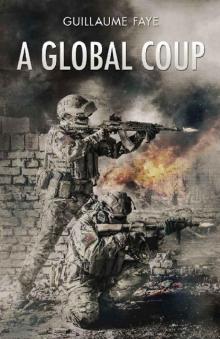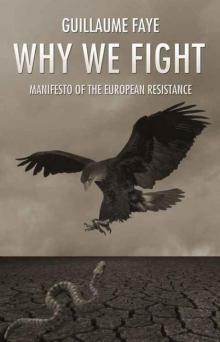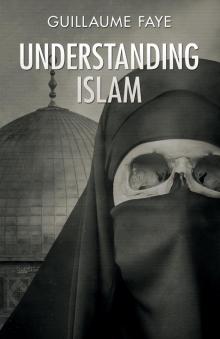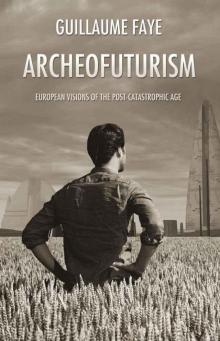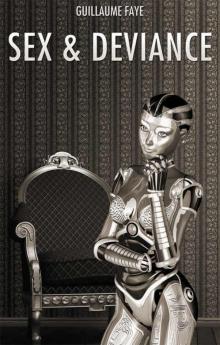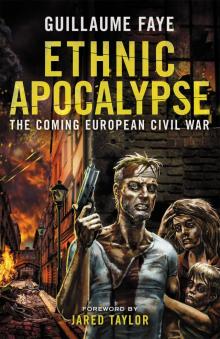Convergence of Catastrophes, page 24




Alain Daniélou, the scholar of Indian traditions,[238] in Le destin du monde d’après la tradition shivaïte,[239] writes: ‘According to the Shaivite Tradition, since the world has been habitable, several human species have already existed. Each had its period of glory, technological development, knowledge, then decline, and found its end in a cataclysm. We belong to the seventh species. The Earth has already known six successive human species that have disappeared, leaving to the following one some traces of their knowledge and sometimes the memory of their glory. After the end of the present species, on seven more occasions the Earth will know the human species, or species like humans, before becoming uninhabitable. All living species develop like entities, like individuals. They have their own gestation, infancy, adolescence, maturity and decline.’
Daniélou distinguishes clearly between the human species that follow one another and the successive civilisations that each knows in its heart. He believes that, in the sacred narratives of the Puranas,[240] he has deciphered the description of the end of a human race that preceded ours, that of the Assours, 60,000 years ago, which bears an astonishing resemblance to what the Shaivite tradition calls the Kali Yuga, that is, the Dark Age in which we have now entered and which will end in the final phase of the present human race. We shall not escape the law of cycles. The linear and ascending vision of human history that modernity possesses, inherited from Christianity, has no reason to exist.
Daniélou writes: ‘The history of the Assours is at one and the same time a tale of the past and a prediction of the future. There is an obvious parallelism between the events, religious conceptions, ideologies and social and moral theories that provoked the destruction of the Assours and those that, since the beginning of the Kali Yuga, characterise current form of humanity and, it seems, must end in the “provoked catastrophe” that eventually awaits us.’ Daniélou believes that there are minorities today who can reject the anti-values that are destroying the current humanity and prepare the rebirth of new vital values: ‘which could allow some to traverse the cataclysm and participate in the Golden Age of the future humanity.’
* * *
Daniélou, by faithfully transcribing the sacred texts of the Shiva, Vishnu, and Linga Purana, gives a narrative of the end of the Assours that bears a strange resemblance to what could be our end, especially in what concerns the moral causes of the decline.
A false god (Aryat, or ‘destroyer of pious people’) begins by ‘condemning the castes and the duties of the different ages of life’. Egalitarianism and non-violence is imposed everywhere. Non-violence is interpreted to mean forbidding opposition to invaders. The decline of this powerful permutation of the human race began in this way, according to this text, which is also a prediction of what will happen again: ‘The number of princes and farmers gradually declines. The working classes want to assume royal power and share the knowledge, the feasts and the beds of the old princes. Most of the new leaders are of working class origin. They hound the priests and the possessors of knowledge.’ So everywhere the economic and mercantile function is substituted for the spiritual function.
The sacred text, cited by Daniélou, continues: ‘The foetus is killed in the mother’s womb and heroes are murdered. The Shudra[241] can behave like Brahmans[242] and priests like workers. Thieves will become kings and kings will be thieves. Leaders confiscate property and put it to evil use. They stop protecting the people. Food already cooked will be put on sale. . . . Gangs of bandits are organised in the towns and countryside. There will be many people with no home, wandering from one country to another. Merchants will make dishonest deals. They will be surrounded by pretentious false philosophers [those who try to mask the decline with reassuring lies]. Everyone will use harsh and vulgar words and no one can be trusted. The people of the Kali Yuga will claim to ignore race differences and the sacred character of marriage, the relation of teacher and pupil and the importance of the rites. Farmers desert their work of sowing and harvesting to become unspecialised workers and assume the mores of those outside the castes. [Is this an allusion to the agro-alimentary business that replaces farming?] There will be a lack of water and fruits will not abound. Many will be clothed in rags and tatters, without work, sleeping on the ground, living like the destitute. People will believe in illusory theories. False gods will be worshipped in false ashrams, where fasts, pilgrimages, penitential acts, gifts of property and austerities will be decreed in the name of the false religions.’
The sacred text then relates that, when he learns of this horrible decadence of the human race of the Assours, the god Shiva used a ‘weapon of fire’ that destroyed all life. Survivors, according to the myth, fled into the ‘Mahar world’, that is, the extraterrestrial world. Later, they returned to Earth, after having preserved certain elements of the wisdom of the Assours in secret, before transmitting them to a new human race . . . ours. Today, we are reliving exactly the same end of the cycle. All this happened 60,000 years ago . . .
* * *
Of course, we are keeping our distance from this Hindu sacred text, which can give rise to wild prophecies. It is, however, neither scientific nor honest to despise the texts of the ancient traditions and to declare in peremptory fashion, that ‘the Assours never existed’, for every myth, as Mircea Eliade[243] has shown, rests on a memory, a partial truth, even if transfigured.
Pierre-Émile Blairon, a disciple of Daniélou and Eliade, and the editor of a very serious traditionalist journal, Roquefavour, has doubts about the truth of the official history and the archaeology behind it: ‘Alain Daniélou takes seriously the hypothesis of all the honest experts in ancient civilisations, that is, that it is not very likely, since mankind has inhabited our planet, that we have to accept the linear thesis of a unique human race, whose origins archaeologists, anthropologists and ethnologists never stop pushing back in time, without drawing the consequences. Namely, that the official theses, in their frenzied dogmatism, refuse to admit even the idea that dozens, perhaps hundreds of civilisations, spiritually and technologically as developed as ours, could have appeared and disappeared without leaving a trace, or else, since these traces exist, they refuse to take them into account’ (Roquefavour, February 2003).
Blairon believes that ‘the similarity of the two declines, that of the Assours and our own, is flabbergasting. So could we attribute some credit to the predictions of the Sanskrit texts that discuss the present human race?’ Analysing chapter 40 of the Linga Purana, Blairon thinks that this current human race will perish, rather soon, in the course of a monstrous generalised war that will only be the climax of the convergence of all the catastrophes now existing, its final leitmotiv. This final catastrophe will be at the same time a purification and the tentative beginning of a regeneration, according to the law of cycles.
Here, in fact, is what is written in this famous chapter: ‘In the twilight period that ends the Kali Yuga, the righter of wrongs will come and slay the evil ones. He will be born from the dynasty of the Moon. His name is War (Samiti). He will wander over the face of the whole Earth with a vast army. He will destroy the Mleccha (Western barbarians) by the thousands. He will destroy those of the lower castes who have seized royal power and will exterminate the false philosophers, the criminals and those of mixed blood.’
These sacred Hindu texts obviously appear shocking to our minds as Westerners. It is not intellectually honest, however, to pass by them in silence.
* * *
Now here is what Daniélou writes in the book from which we have quoted. Commentary would be superfluous: ‘According to the theory of cycles that regulate the evolution of the world, we are today approaching the end of the Kali Yuga, the age of conflicts, wars, genocides, embezzlements, aberrant philosophical systems, the baneful development of knowledge that falls into irresponsible hands. There is mixture of races and castes. Everything tends to seek the lowest level and levelling in every area is the prelude to death. At the end of the Kali Yuga this process accelerates. The phenomenon of acceleration is one of the signs of approaching catastrophe.’
Out of Chaos into the Light
This ‘convergence of catastrophes’ should not drive us to pessimism. On the contrary, it should, perhaps, prepare us for what Daniélou in the article we cited calls ‘the Golden Age of a future humanity’, even if we stand a good chance of witnessing for the first time in our history the global collapse of a worldwide civilisation, with all the suffering and crimes that this supposes. How can we not rejoice, however, at the end of a world that is detestable on the ethical level and eroded by its own contempt for life?
Every civilisation is a cycle, which contains three parts: a slow rise, a brief apogee and a sudden fall. Up to the present, this model has been applied to civilisations that are geographically separate — Egyptians, Romans, Amerindians, and so on. Today, for the first time, it concerns the whole of humanity. At least, ‘for the first time’ in the known historical period, for, as we have just seen, Tradition[244] states that this cataclysmic catastrophe of humanity will not be the first one.
In other words, we are perhaps arriving at the end of a general cycle of human history, a history that was led astray into a dead-end, one that we are living through today. We may very well be at the end of an Iron Age, on the imminent eve of chaos. But from this chaos will arise a new period of humanity, one perhaps spiritually superior, no longer held down by materialist and individualist burdens. This new humanity will correspond to the emergence of a ‘new race’ (in the metaphysical sense, not the biological one), thanks to which civilisation will take off again, will be reborn on foundations that are much more stable and ethically higher. Will the lessons of the great cataclysm of the Twenty-first century have been understood? In Patterns in Comparative Religion,[245] Mircea Eliade wrote: ‘Men disappear periodically in a deluge or flood because of their “sins”… They never perish utterly, but reappear in a new form, return to the same destined path, and await the repetition of the same catastrophe which will again dissolve them in water.’[246]
In The Myth of the Eternal Return,[247] Eliade notes, ‘[D]eluge or flood puts an end to an exhausted and sinful humanity…[but] even the disappearance of an entire humanity (deluge, flood, submersion of a continent, and so on) is never total, for a new humanity is born from a pair of survivors.’[248]
* * *
To paraphrase the visionary poet Hölderlin,[249] we are entering the night, the ‘world’s midnight’.[250] We are at twilight. But after the ordeal of the night, what will follow can only be the morning, since the Sun is always reborn. Sol Invictus.[251]
The term ‘catastrophe’ should not be perceived in the sense of ‘apocalypse’, but of ‘transformation’ and ‘metamorphosis’. We are not yet in the times of Death. The Sun is not ready to go out. Simply, humanity is arriving at a crucial point of its millennia-long history and must wait for the plunge into the abyss, but at the same time for a rebirth and regeneration, which will be based on a new type of human.
What I have tried to express in this book in a scientific and rational manner is this objective acceleration of the symptoms of the end of a cycle, which has also been observed by poets and people of faith for several centuries. Although I am not very well versed in esotericism and my approach has always been rational and observational, I believe that it is not right to underestimate or neglect intuitive perceptions, those that come from an irrational method, which is rooted in another dimension.
In all the great ‘religions’, whether it is a question of Islam, Christianity, Buddhism, Celtic cults, and so on, this idea, this vague intuition that mankind is heading toward a global collapse, from which a new cycle for the entire race will be reborn, has always been present and prophesied. This time, this moment, which has been foretold for so long, perhaps we have finally reached it in the Twenty-first century. A general decadence, a tragedy, those that appear today on the horizon and have been proclaimed for a long time by what can be called the voices of ‘Tradition’ will be replaced by something else, which it is still impossible to describe. Predicting the new civilisation is risky and uncertain. What is certain, however, is that today’s civilisation is on the verge of death and its death will take the form, before the middle of the Twenty-first century, of an appalling cataclysm. My diagnosis is ruthless. But every death is followed by a birth, a reincarnation.
* * *
Despair is not appropriate. The end of the world is good news, even if it will occur soon with distress and suffering. After the coming shadows will come the light. Human history is far from reaching its end. Preparing for catastrophe and rebirth means transforming oneself from the inside. The tragedy on the horizon is perhaps the will of what is called God or fate. We are ruled by forces which we do not understand and which play dice with us. A new world is about to be born. Man is despairing, but despair is inhuman. The future is thrilling because it is catastrophic. We are dice in God’s hands. Who is God?
Other books published by Arktos:
Beyond Human Rights
by Alain de Benoist
Manifesto for a European Renaissance
by Alain de Benoist & Charles Champetier
The Problem of Democracy
by Alain de Benoist
Germany’s Third Empire
by Arthur Moeller van den Bruck
The Arctic Home in the Vedas
by Bal Gangadhar Tilak
Revolution from Above
by Kerry Bolton
The Fourth Political Theory
by Alexander Dugin
Metaphysics of War
by Julius Evola
The Path of Cinnabar:
An Intellectual Autobiography
by Julius Evola
Archeofuturism
by Guillaume Faye
Why We Fight
by Guillaume Faye
The WASP Question
by Andrew Fraser
The Saga of the Aryan Race volumes 1-2
by Porus Homi Havewala
The Saga of the Aryan Race volumes 3-5
by Porus Homi Havewala
The Owls of Afrasiab
by Lars Holger Holm
De Naturae Natura
by Alexander Jacob
Fighting for the Essence
by Pierre Krebs
Can Life Prevail?
by Pentti Linkola
The Ten Commandments of Propaganda
by Brian Anse Patrick
A Handbook of Traditional Living
by Raido
The Agni and the Ecstasy
by Steven J. Rosen
The Jedi in the Lotus:
Star Wars and the Hindu Tradition
by Steven J. Rosen
It Cannot Be Stormed
by Ernst von Salomon
Tradition & Revolution
by Troy Southgate
Against Democracy and Equality
by Tomislav Sunic
The Initiate: Journal of Traditional Studies
by David J. Wingfield (ed.)
[1] Robert Ardrey (1908-1980) was a widely read and discussed author during the 1960s, particularly his books African Genesis (1961) and The Territorial Imperative (1966). Ardrey’s most controversial hypothesis, known as the ‘killer ape theory’, posits that what distinguished humans’ evolutionary ancestors from other primates was their aggressiveness, which caused them to develop weapons to conquer their environment and also leading to changes in their brains which led to modern humans. In his view, aggressiveness was an inherent part of the human character rather than an aberration. Ardrey’s ideas were highly influential at the time, most notably in the ‘Dawn of Man’ sequence of 2001: A Space Odyssey, and also in the writings of GRECE, in which Ardrey was frequently cited.
[2] Faye uses the term ‘South’ to refer to the Third World nations to the south of Europe and North America which threaten the First World nations through immigration, most especially the Islamic countries of the Middle East and North Africa.
[3] Presumably a reference to ‘society of the spectacle’, a term coined by Guy Debord (1931-1994), a French Marxist philosopher and the founder of the anarchist Situationist International. The spectacle, as described in his principal work, The Society of the Spectacle, is one of the means by which the capitalist establishment maintains its authority in the modern world — namely, by reducing all genuine human experiences to representational images in the mass media, thus allowing the powers-that-be to determine how individuals experience reality.
[4] This is a concept developed by the French author Alain Minc, in which he predicts a coming time of chaos and hardship resembling the Middle Ages, which will end in the development of a much smaller, but more sustainable, global economy. He discusses this idea in Le Nouveau Moyen-âge (Paris: Gallimard, 1993).
[5] Jacques Attali (b. 1943) is a French economist who was an advisor to Mitterrand during the first decade of his presidency. Many of his writings are available in translation. Faye may be referring to Attali’s article ‘The Crash of Western Civilisation: The Limits of the Market and Democracy’, which appeared in the Summer 1997 issue of the American journal Foreign Policy. In it, Attali claimed that democracy and the free market are incompatible, writing: ‘Unless the West, and particularly its self-appointed leader, the United States, begins to recognise the shortcomings of the market economy and democracy, Western civilisation will gradually disintegrate and eventually self-destruct.’ In many ways his arguments resemble Faye’s.











